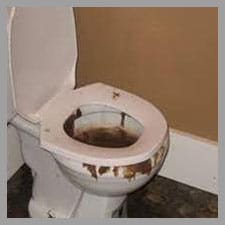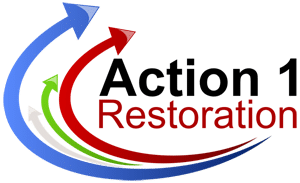5 of the Most Common Causes of a Sewage Backup
Each year, thousands of homeowners find themselves dealing with water damage caused by a sewer backup when they least expect it. Unfortunately, because of the nature of the flooding, the cleanup for this can be particularly difficult. While it’s certainly a situation that can be taken care of by trained professionals, it’s still important for homeowners to prepare themselves for the unexpected. Below, Action 1 Restoration has shared some information that can help you understand more about dealing with and avoiding this type of disaster.
When sewer backups happens, the wastewater that is used in your washing machine, toilet, showers, and sinks will push back into your home rather than going down the pipes as normal. Unfortunately, this means dangerous wastewater causing damage to your home when you least expect it. By understanding more about the causes of this type of disaster, you may be able to potentially prevent it from happening in your own home. This can pay off by making your home safer and teaching you tips for keeping your pipes healthy and running efficiently.
1. Tree Roots Damage the Sewer Main Line
Although trees are beautiful and add privacy around the outside of your home, they can become dangerous when their roots grow into your sewer lines over time. This can cause a multitude of problems, including a sewer line backup right into your home. The only way to remedy this is by calling a professional to cut the roots away and then repair the sewer lines where they were damaged.
If you have trees close to your home, have a plumber take a look at your sewer lines to see if they are in good shape. By being proactive, you may be able to catch a problem with tree roots before they begin causing real damage. Although this may mean taking trees out of your yard, it can be worth it for the safety of your pipes.
2. Sewer Line Clogs

At Action 1 Restoration, we recommend having a plumber clean out your pipes once per year to keep them running efficiently. As a bonus, this can also get rid of any clogs that might be present so they don’t become bigger backups problems down the road.
3. Broken or Clogged Pipes
Even when pipes are made of durable materials, they can deteriorate over time. This is why older homes are at a higher risk of pipes breaking down and eventually collapsing. Even a small crack can cause problems and lead to a sewer backup. The only way to minimize backups risks is by having your pipes replaced if you live in an older home. While this can be a costly upgrade, it’s worth it to avoid the potential damage sewer backups can cause.
4. City Main Issues
Your city’s main sanitary line could have a blockage that slowly pushes sewage back into homes and businesses in the area. The only silver lining to this problem is that it won’t happen quickly, which means you’ll likely have time to report the problem before it gets worse.
5. Problematic Sewer Line Setup
Downspouts and gutters should not be connected to sanitary sewer lines, as this can push too much water into the pipes and lead to a backup when bad weather arises. If this is how your home is currently set up, it’s recommended to speak with a professional about having outside water lines redirected away from your sewer line.
- Dangers of Sewer Backup:
- Water damage to your floors, walls, furniture, ceiling, and more
- Exposure to dangerous bacteria, including Salmonella, Various Coli, and Helicobacter Pylori
- Risk of electrical fire when water reaches outlets
- Mold growth due to moisture in the structure
What to Do if a Backup Disaster Strikes
By being proactive with care for your home and its sewer lines, you may be able to prevent sewer backups from happening. However, it’s important to note that this disaster can still happen even with regular care. If it does, it’s important to act fast and have the damage cleaned up by an experienced restoration professional. While you may want to try to deal with this on your own, this can put you in danger of illness and leave your home in danger of increased damaged.
At Action 1 Restoration, we understand that a sewer backup is the last thing you want to deal with as a homeowner. However, it’s crucial to act quickly as soon as you notice a problem. While a plumber may be able to help initially, any damage that occurs should be cleaned up by an experienced restoration technician. This will ensure your home is recovered and cleaned properly so it’s safe to live in once the mess is cleaned up.
Major Insurance Companies Our Local Contractors Work With









